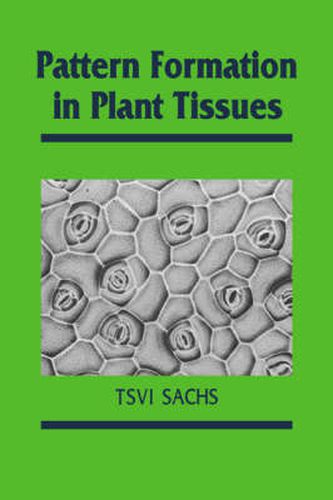Readings Newsletter
Become a Readings Member to make your shopping experience even easier.
Sign in or sign up for free!
You’re not far away from qualifying for FREE standard shipping within Australia
You’ve qualified for FREE standard shipping within Australia
The cart is loading…






Plants are an advantageous group for the consideration of the development of biological form. Plants share most aspects of cell biology with other organisms, yet their embryonic development continues throughout their life, their cells do not move relative to each other and their structure is relatively simple. The chapters in this book are centred around the structure of tissues and its purpose is to try and predict what should be looked for at a molecular level so as to account for observable forms. Each chapter deals with a defined problem such as the role of hormones as correlative agents, tissue polarization, apical meristems and cell lineages. The final chapter develops an alternative approach to the problem of the specification of biological form, that of ‘epigenetic selection’. The chapters are centred around the structure of tissues, an intermediate and neglected level between overt morphology and biochemistry, and will be of great interest to all those engaged in attempting to understand the principles behind plant development.
$9.00 standard shipping within Australia
FREE standard shipping within Australia for orders over $100.00
Express & International shipping calculated at checkout
Plants are an advantageous group for the consideration of the development of biological form. Plants share most aspects of cell biology with other organisms, yet their embryonic development continues throughout their life, their cells do not move relative to each other and their structure is relatively simple. The chapters in this book are centred around the structure of tissues and its purpose is to try and predict what should be looked for at a molecular level so as to account for observable forms. Each chapter deals with a defined problem such as the role of hormones as correlative agents, tissue polarization, apical meristems and cell lineages. The final chapter develops an alternative approach to the problem of the specification of biological form, that of ‘epigenetic selection’. The chapters are centred around the structure of tissues, an intermediate and neglected level between overt morphology and biochemistry, and will be of great interest to all those engaged in attempting to understand the principles behind plant development.